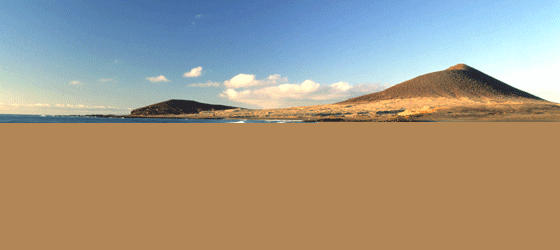
Each island is different and has its own individual character. The Canary Islands are situated approximately 70 miles from the African coast and just over 700 miles from Cadiz. The archipelago is formed by 7 major islands and 6 minor ones and is divided into two provinces: Tenerife and Las Palmas. Tenerife, Palma, Gomera and Hierro belong to the former, while Gran Canaria, Lanzarote and Fuerteventura belong to the latter. The Canarian climate is among one of the best in the world. The islands in general have exceptionally good weather throughout the year without brusque changes from one season to another. Situated amidst the Gulf Stream and protected by the trade winds, they have no real winter and because of its southern position, the archipelago hardly ever suffers from low temperatures. The days are mostly warm and sunny; statistics show that there are no more than 69 rainy days per year and, at night, there is very rarely any dampness.
There is much speculation regarding the formation of the islands. Some geologists maintain that they emerged from the sea as a result of the activity of submarine volcanoes, whilst others take the view that, along with the Azores and Cape Verde, they are the highest peaks of the fabled Atlantis, which legend says sank into the sea, after its cataclysmic destruction. The latter idea is by far the more romantic, and the one which the Canarian people prefer. The original inhabitants of the archipelago were the Guanche race and were to be found on all the islands, but predominantly on Tenerife.
Some historians believe this race to be of Egyptian origin because of the similarity in the methods of mummifying corpses. Others are more in favour of a Scandinavian or Carthaginian origin, in view of the frequent sea voyages undertaken by these people. However, those who favour the “Atlantis” theory regard the Guanches as an indigenous race, being part of the original inhabitants of the ‘lost continent’. The Guanches were said to be a tall people, with fair hair and blue eyes. They also possessed extraordinary strength.
Around 1,000 A.D. an Arab captain, Ben-Farroukh, landed with 130 men at Gando on Gran Canaria, where the airport now stands and, over the next two centuries, several voyages were made by the Arabs until they conquered the archipelago, which they gave the name, Aldjeriz al-Khalidah, meaning Fortunate Islands. In the fourteenth century the kings of both Portugal and Spain sent expeditions to the Canaries to explore the islands, but it was not until the fifteenth century that a foreign power really established itself in the islands.
In 1402 Juan de Bethencourt, a Norman knight, pledged allegiance to the House of Castile and, under its patronage, set sail to conquer the islands, but it was not until September 29th, 1496, that Tenerife, the last stronghold of the Guanches, was conquered. Since then the archipelago has been under Spanish rule and the Canarian people have contributed much to Spanish history; their sailors were amongst those who explored the Americas, their soldiers fought whenever the Mother Country needed them, and the bond between the islands and the Peninsula is as strong today as ever.




Be the first to comment